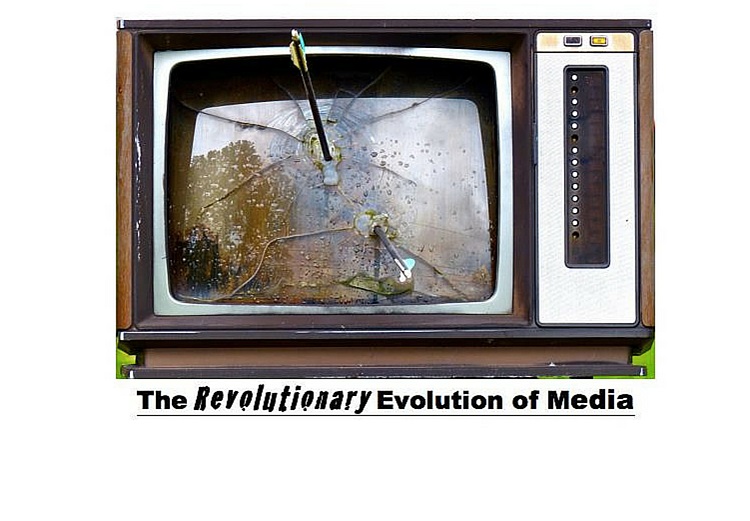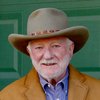TREotM: The Seventies (with Coax)

Chapter 10, Part 5
This is a work in progress. Read the previous chapters here.
The Seventies introduced a new column in Fairchild Publishing’s Electronic News called Silicon Valley USA. The US boasted 58.5million TVHH with a 92.6% penetration; 4.5million were connected to a cable paying monthly fees. Over 90% of TVHH watched via broadcast TV. By the end of the decade, the numbers would grow dramatically as 76.3million TVHH meant a penetration of almost 98% … with some 19.2million subscribers paying 4,225 cable systems. And broadcasters owned a third of those systems. (CBS, though, spun off its cable systems and a few other smaller businesses creating Viacom. In 2015 rumors surface about reuniting the companies; didn’t happen, though.)
The FCC lifted the 1968 ban on cable in the top 100 markets setting much of that in motion. Congress established the Office of Telecommunications Policy (OTP) headed by Clay T. Whitehead, who had lobbied newly elected President Richard Nixon to create it, in charge. The Office was later merged into the Commerce Department’s National Telecommunications and Information Administration (NTIA). Of note, Supreme Court Justice Antonin Scalia worked at OTP as General Counsel and C-SPAN (see 1979) founder Brian Lamb worked as Congressional and press liaison.
Congress took tobacco in the form of cigarettes off the air snuffing out an entire ad category; then, ABC debuted Monday Night Football making the combined NFL/AFL a long weekend affair. And Howard Cosell changed the very rhythm of American speech patterns. But the NFL blocked Storer Cable from showing 49er games.
Ray Tomlinson transmitted the first email over ARPANET in 1971. Norman Lear’s All in the Family debuted putting a bigoted Archie Bunker in most TV homes while making a star of another Reiner family member. PBS broadcast Upstairs, Downstairs presaged Downton Abbey’s popularity by decades. Nolan Bushnell created Atari Pong again proving a TV tube could be even more useful than watching soap operas (talk about a good idea; just look at all of today’s screens!). National Public Radio (NPR) went on the air with the Senate hearings on how to end the Vietnam War. Susan Stamberg became the first woman to anchor a daily newscast.
In 1972, the pioneering weekly Life magazine temporarily died (it came back as a monthly from 1978 – 2000 but not rechristened Lazarus). Ms. magazine launched. Time, Inc. tested the idea of a pay TV channel with a mailed survey in six US cities. A startling 99% said, in effect, “No way!” But Chuck Dolan, whose idea it was, talked Time into trying again; this time a whopping 4% said they’d try it. Then, via door-to-door salesmen in Allentown, Pennsylvania, potential subscribers were offered a free month and a refundable installation fee and one out of two household said they were interested. Because Allentown was subject to NBA blackout rules at the time, Time took up Service Electric CEO John Walson’s suggestion to try it out in Wilkes-Barre, Time began microwaving Home Box Office to 325 “subs” showing Sometimes a Great Notion on November 8, 1972. The movie was immediately followed by a hockey game … live. And half of TVHH in the US had color sets.
Echoing the Army hearings of the ‘50s, the televising of the Senate Watergate hearings in the summer of 1973 was the most “popular” daytime programming for that year. This also probably brought more TV sets into offices than anything before or since. In fact, some 17,368,000 TV sets were sold in 1973. It took a couple of newspaper reporters for The Washington Post to flesh out the details while President Richard Nixon hung on until August 8, 1974 before resigning his office … on TV, of course. Not long after, newly elevated VP to President Gerald Ford pardoned Nixon … again on TV.
The year also brought more significant steps toward a digital world as Bob Metcalfe at Xerox PARC developed Ethernet. At Leopold’s Record store in Berkeley, California, a “community memory shared terminal” was set up for patrons; a sort of single computer social network. And Vint Cerf and Bob Kahn completed the TCP/IP protocols for the soon-to-be Internet.
The Justice Department focused on breaking up AT&T (the old one, not the one with that name today that’s put most of the old one back together and is trying to add satellite distribution, too).
On the evening of September 30, 1975, HBO satcast (that is, broadcast via geostationary satellite) the first live TV program over Westar 1 to cable systems in Vero Beach, Florida and Jackson, Mississippi. The show was the Thrilla from Manilafeaturing Mohammed Ali and Joe Frazier. Some of us had just finished installing the 10-meter satellite receiver dish the day before and we were thankful to watch it at the Vero Beach Holiday Inn. HBO moved from Westar 1 to Satcom 1 the following year. We had launched CableVision Magazine on September 1st. Great way to start a new magazine when the skies are the limit.
In 1977 we stood by as Ted Turner turned on Atlanta’s WTCG-TV (which stood for “watch this channel grow”) via satellite as the first cable superstation. Pat Robertson’s CBN launched not long after over satellite, too (now ABC Family).
The era of the blockbuster movie started with Steven Spielberg’s Jawsbooking the startling box office of $123million. Then came Rocky($117million) and Star Wars ($260million).
Also in 1975, the Altair computer from MITS appeared; and to write software for it, Paul Allen and Bill Gates started Microsoft. Then Steve Jobs and Steve Wozniak debuted the Apple 1. Two years later brought the Apple II. And Brian Lamb, working for the just-launched CableVision Magazine, dreamed up the idea that became C-SPAN.
Congress passed the Copyright Act of 1976 establishing the Copyright Royalty Tribunal within the Library of Congress. The result for media was the mandate that cable systems pay a copyright fee.
ABC broadcast Roots from January 23-30, 1977 dominating ratings and creating the mini-series. A Roper study in late that year found the first ever drop-off in TV viewing; it seemed an anomaly. But viewership would, in the next century, fluctuate as so many new video sources arrived.
While Congress didn’t create the next blow to advertising revenues, the Supreme Court did validate it later. The commercial videocassette recorder debuted in 1977 and the format wars between Sony Betamax and JVC (via RCA) VHS ensued. Sony won the verdict but JVC won the format race.
The first Internet Bulletin Board System debuted in 1978. Laser TV discs had a short life but paved the way for audio CDs. Usenet newsgroups followed in 1979. The Sony Walkman was introduced in Japan. The Iranian hostage crisis lead to “Nightline” on ABC and contributed mightily to the challenging Presidential candidate Ronald Reagan’s unseating of incumbent Jimmy Carter in October of 1980.
The decade ended with events that presaged the explosion of “niche” cable networks in the 1980s.
The last year of the ‘70s saw Black Entertainment Television (BET), Cable-Satellite Public Affairs Network (C-SPAN) and the Entertainment and Sports Programming Network (ESPN) launched or were announced. BET was backed by one of the largest multiple system cable operators (MSOs), Tele-Communications, Inc. (TCI) which was run by Bob Magness and Dr. John Malone (now controller of Liberty Global and Charter) and Bob Johnson, who later became one of the first African-American billionaires when he sold BET to Viacom. C-SPAN presented an unfiltered view of the House of Representatives and was uniquely funded by cable operators themselves as a non-profit and, as cable public relations folks trumpeted, a “gift to America.” Some of the gift sometimes deteriorated into bloviating on television at midnight.
ESPN debuted September 7, 1979 backed by Getty Oil’s non-oil business interest unit that was run by Stuart Evey. The original concept had been to serve Connecticut cable operators. But at a meeting with RCA’s satellite unit, the founding Rasmussans (Bill and son Scott) discovered a satellite that would cover the continental US would cost less than renting microwave and cable service for just Connecticut. Their other naïve idea was to follow the then-broadcast model of paying fees to distributors as broadcast networks then paid fees to local TV stations to broadcast network programming (like a lot of business models, that one changed, too).
With fits and starts and the help of NBC’s very unhappy sports honcho Chet Simmons, ESPN debuted with the first iteration of Sports Center followed by a slow pitch softball game. About 30k tuned in to hear: The first words spoken informed viewers: "If you love sports...if you really love sports, you'll think you've died and gone to sports heaven."
Getty and Simmons took over, figured out how to charge cable operators a per-sub fee and ESPN now has eight channels. Anheuser Busch, in effect, saved ESPN when it bought a million dollars in advertising in 1980 making a long bet work.
Next week: Chapter 10, Part 6 – The Eighties & Cable Nets
The opinions and points of view expressed in this commentary are exclusively the views of the author and do not necessarily represent the views of MediaVillage management or associated bloggers.


